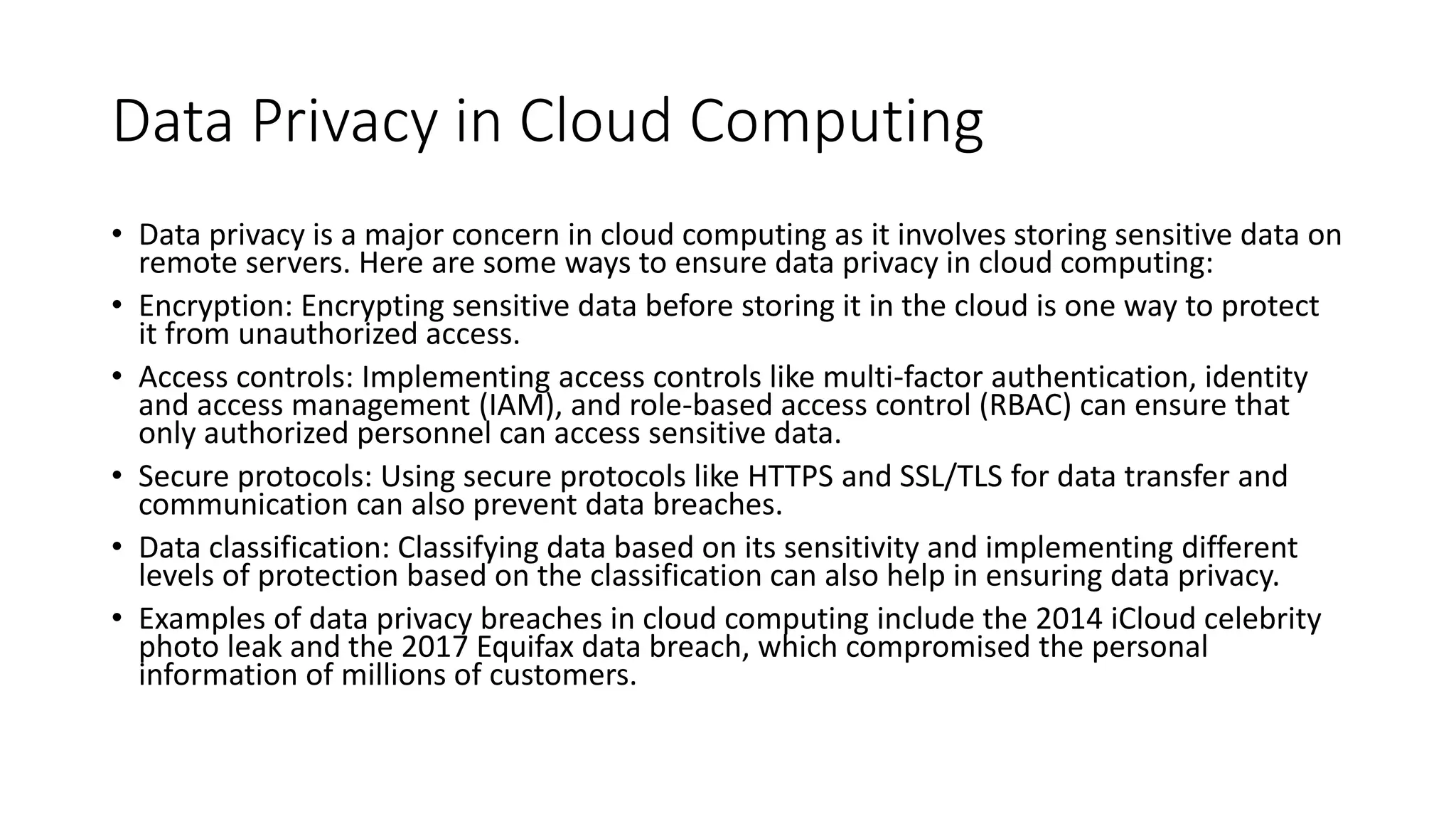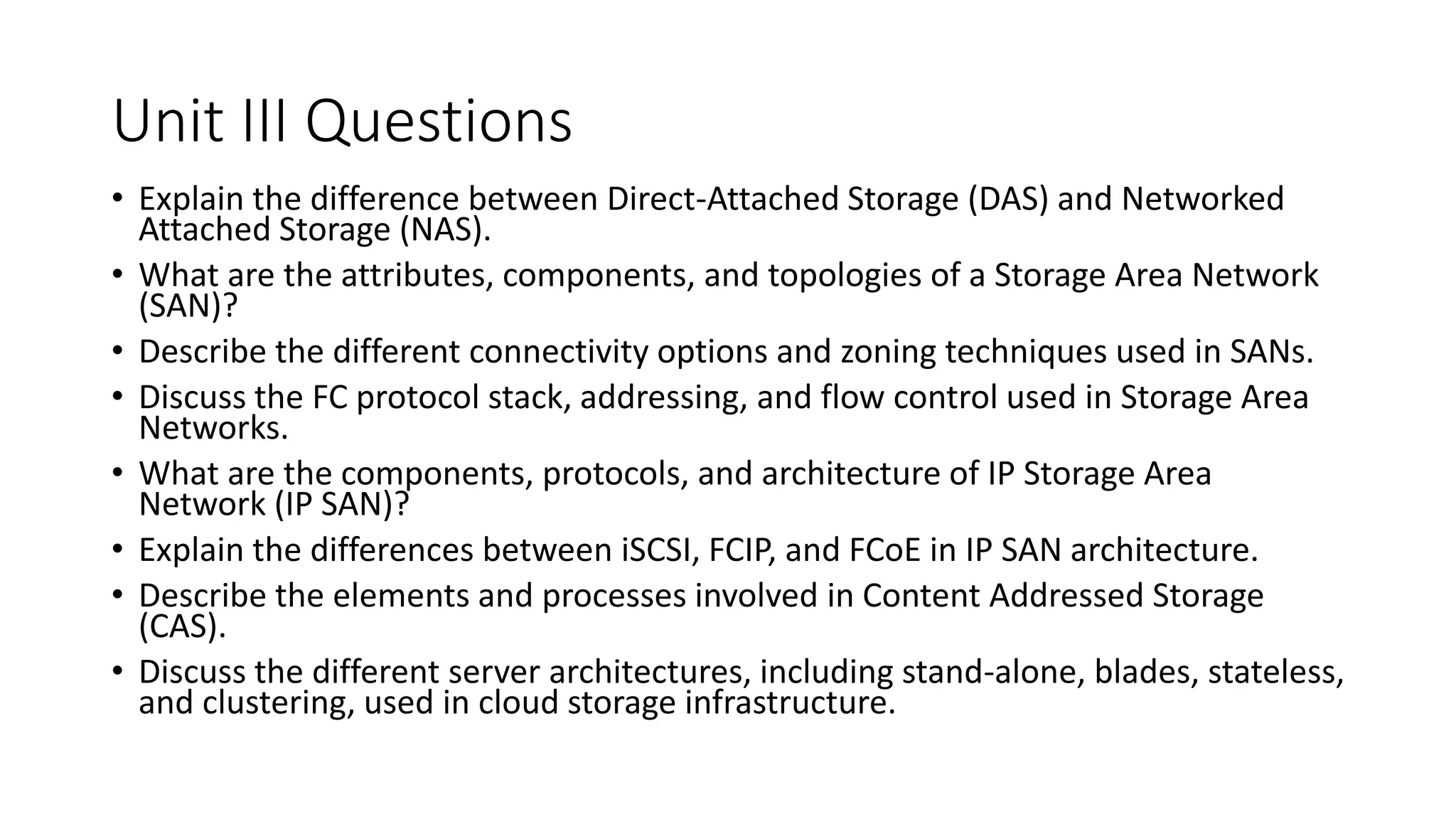The document discusses cloud security issues, including multitenancy risks such as data leakage and privilege escalation, common threats like DDoS attacks and data breaches, and specific attack types like hypervisor attacks and man-in-the-middle attacks. It highlights the importance of implementing strong security measures, such as encryption and access controls, to mitigate these threats, while also addressing data privacy and availability concerns in cloud computing. Additionally, it provides examples of notable breaches and emphasizes the necessity of SLAs and disaster recovery plans to ensure service reliability.












